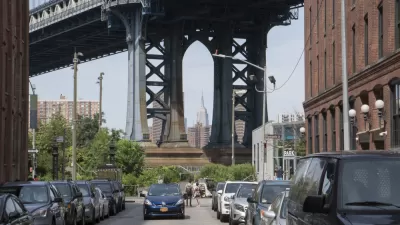Cities have become obsessed with going viral.

If you want to test your city's brand power—that is, its tourism appeal—try searching its name on Instagram. Social media impressions have become a valuable currency for cities seeking to beef up their tourism economies, and to build this particular form of marketing clout, many major cities are investing heavily in outsized, iconic displays designed to function as the perfect backdrop for highly shareable selfies.
"In urban space, our desire to photograph and share virtually everything has spawned a new genre of urban pleasure grounds. They specialize in Instagram bait, a hybrid of ultra-popular immersive art … and increasingly ubiquitous brand activations," Benjamin Schneider writes in CityLab. "These social factories, as they might be called, tone down the art and branding aspects, leaving their social media appeal to do the heavy lifting."
Schneider's definition is part of CityLab's tongue-in-cheek "guide to the #GrammableCity," a collaborative analysis of the photo-friendly public art trends cities are adopting to drum up social media attention and attract ever more tourists. (Among the more fashionable choices: larger-than-life letter sculptures, faux street art in rainbow palettes, and ubiquitous decorative lights.) The writers also explore the phenomenon's broader implications for art, civic institutions, and infrastructure: Cities' obsession with social media tourism, Kriston Capps writes, has grown to the point that some have eschewed crucial city lifelines in favor of flashy new visuals—as when New York chose to outfit MTA bridges with LEDs over funding basic repairs to the crumbling system.
The civic craze over easily replicable, eminently consumable "Instagram bait" isn't likely to wind down in the near future, CityLab authors agree. Rather, as Schneider writes, "Every part of the real world stands to be 'socialized.'"
FULL STORY: Your Entire City Is an Instagram Playground Now

Trump Administration Could Effectively End Housing Voucher Program
Federal officials are eyeing major cuts to the Section 8 program that helps millions of low-income households pay rent.

Planetizen Federal Action Tracker
A weekly monitor of how Trump’s orders and actions are impacting planners and planning in America.

Ken Jennings Launches Transit Web Series
The Jeopardy champ wants you to ride public transit.

Crime Continues to Drop on Philly, San Francisco Transit Systems
SEPTA and BART both saw significant declines in violent crime in the first quarter of 2025.

How South LA Green Spaces Power Community Health and Hope
Green spaces like South L.A. Wetlands Park are helping South Los Angeles residents promote healthy lifestyles, build community, and advocate for improvements that reflect local needs in historically underserved neighborhoods.

Sacramento Plans ‘Quick-Build’ Road Safety Projects
The city wants to accelerate small-scale safety improvements that use low-cost equipment to make an impact at dangerous intersections.
Urban Design for Planners 1: Software Tools
This six-course series explores essential urban design concepts using open source software and equips planners with the tools they need to participate fully in the urban design process.
Planning for Universal Design
Learn the tools for implementing Universal Design in planning regulations.
Heyer Gruel & Associates PA
Ada County Highway District
Institute for Housing and Urban Development Studies (IHS)
City of Grandview
Harvard GSD Executive Education
Toledo-Lucas County Plan Commissions
Salt Lake City
NYU Wagner Graduate School of Public Service




























